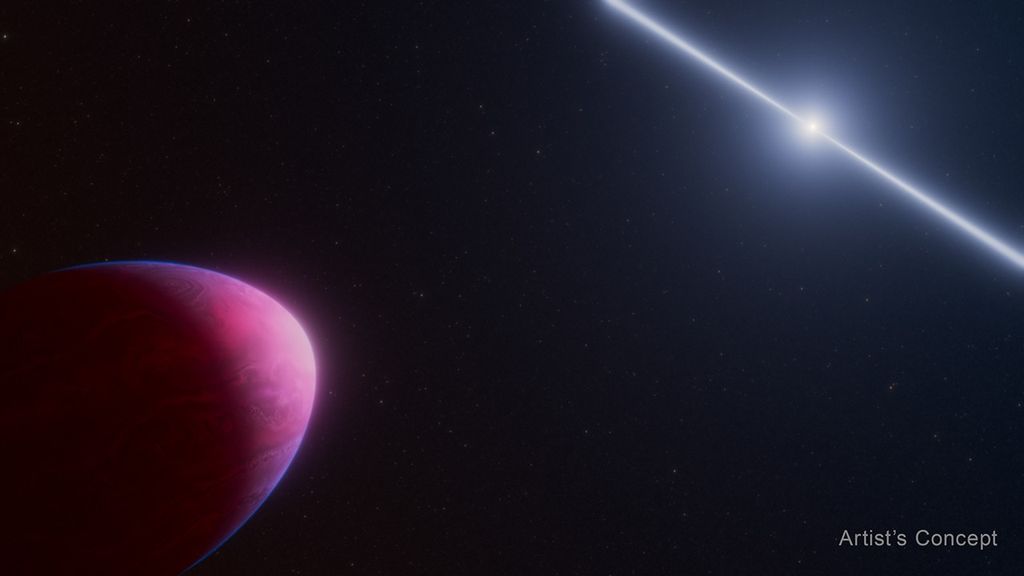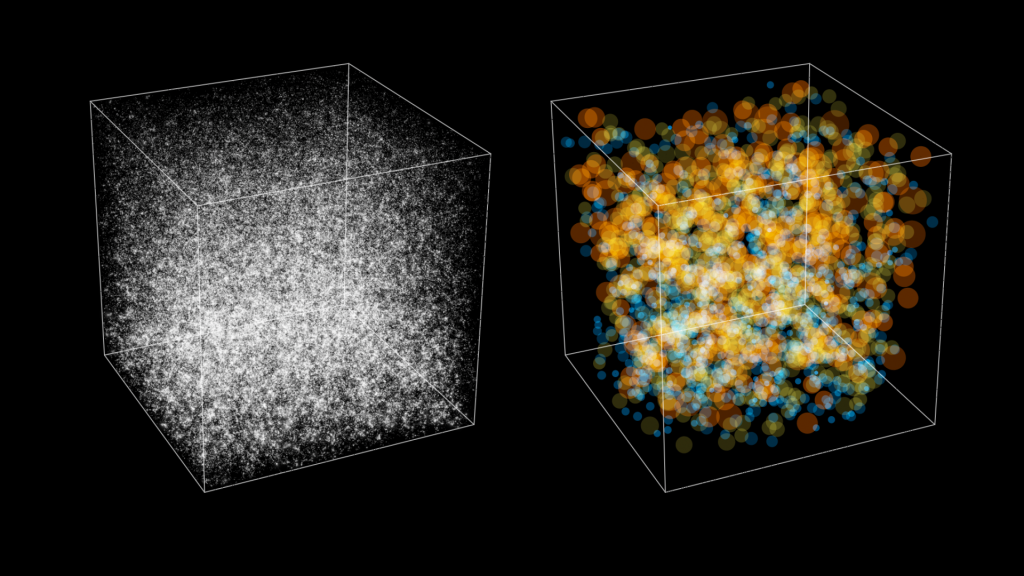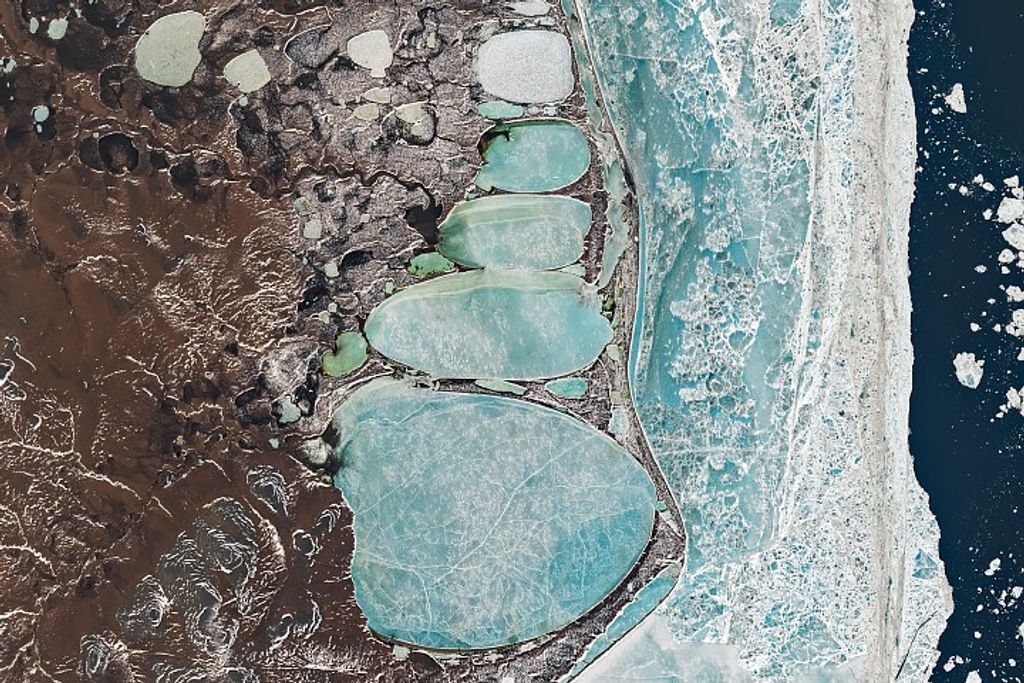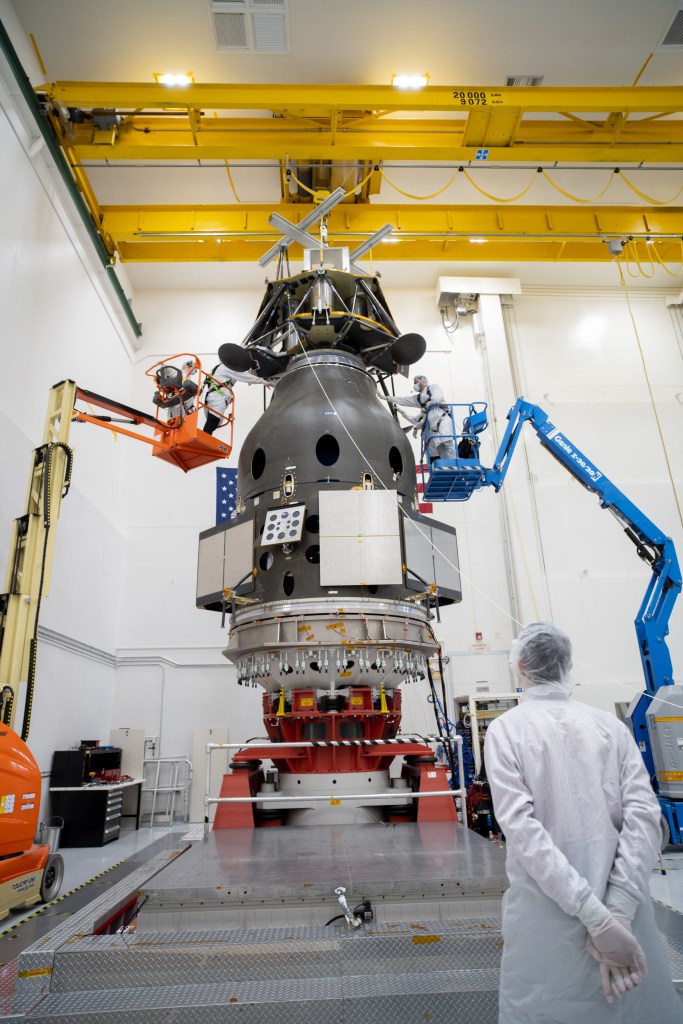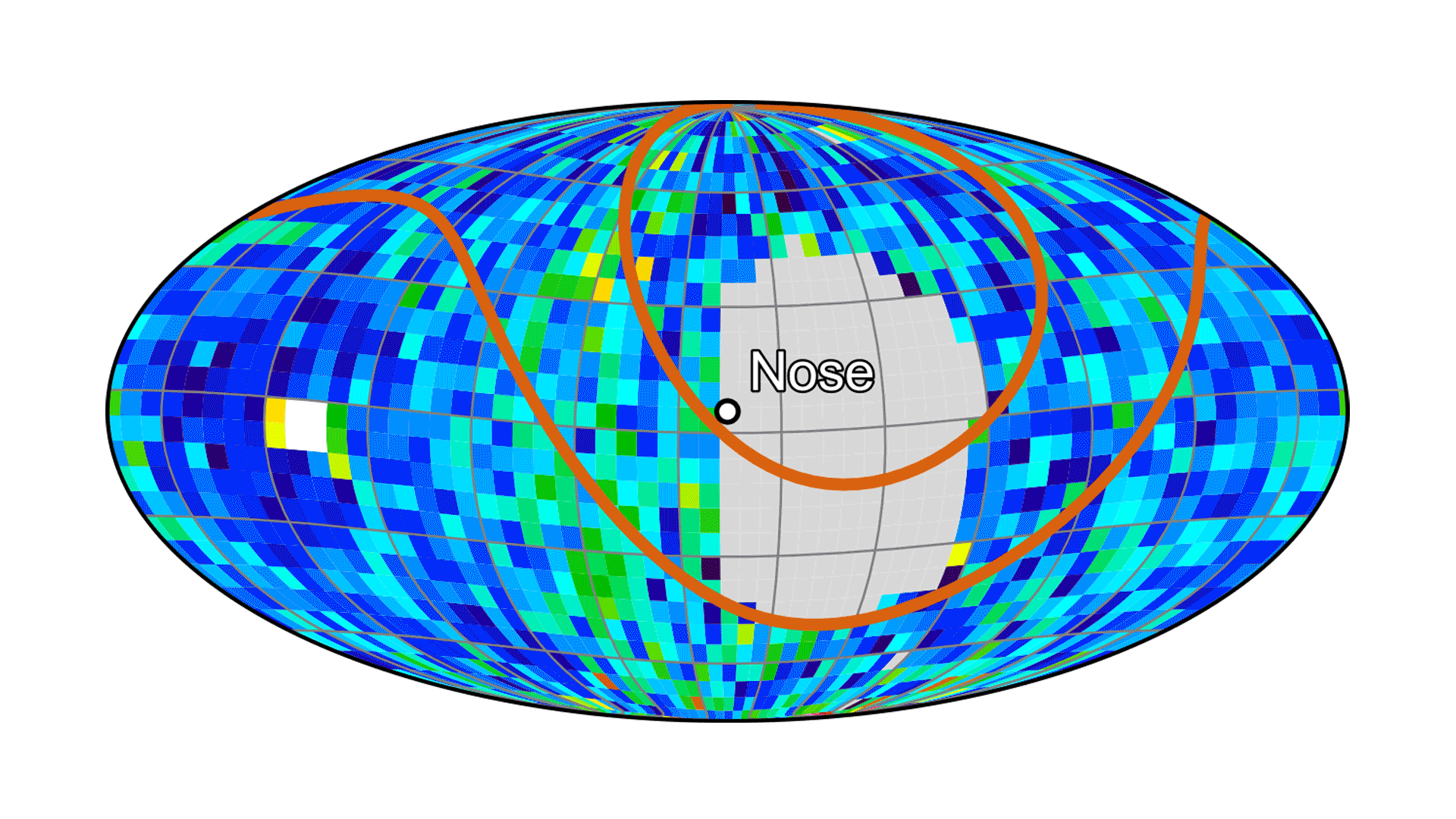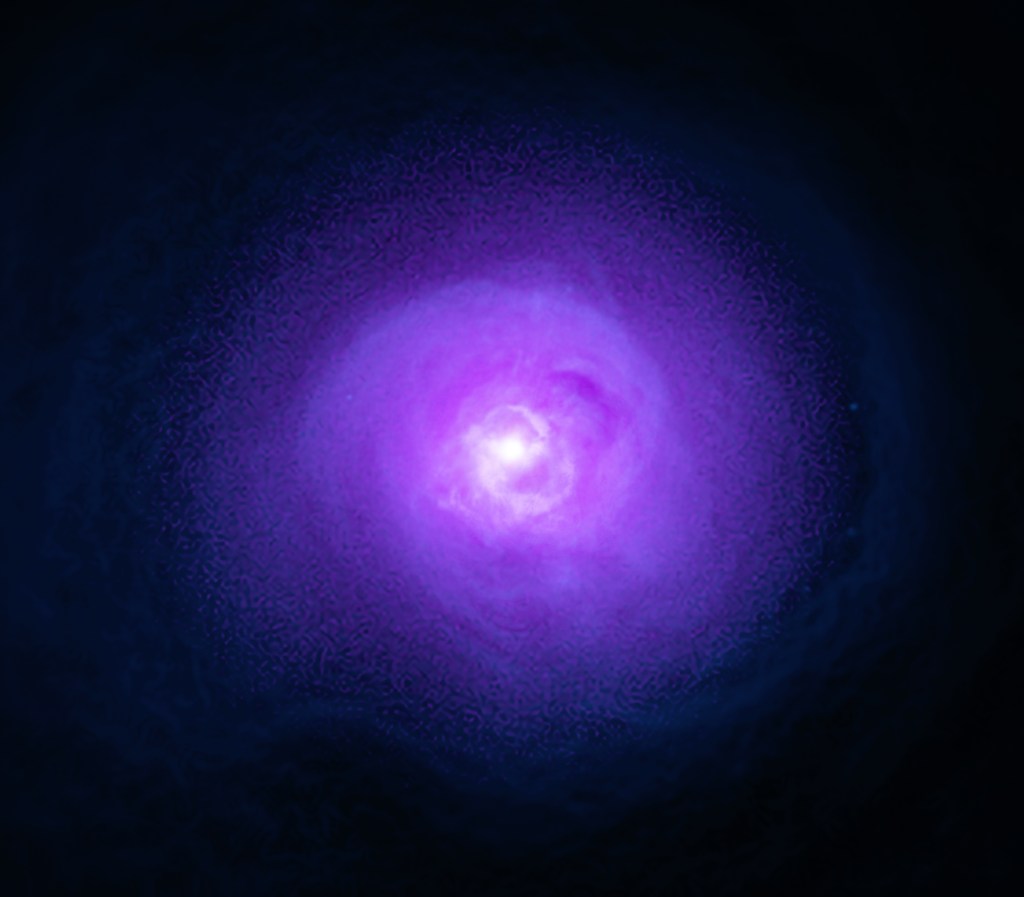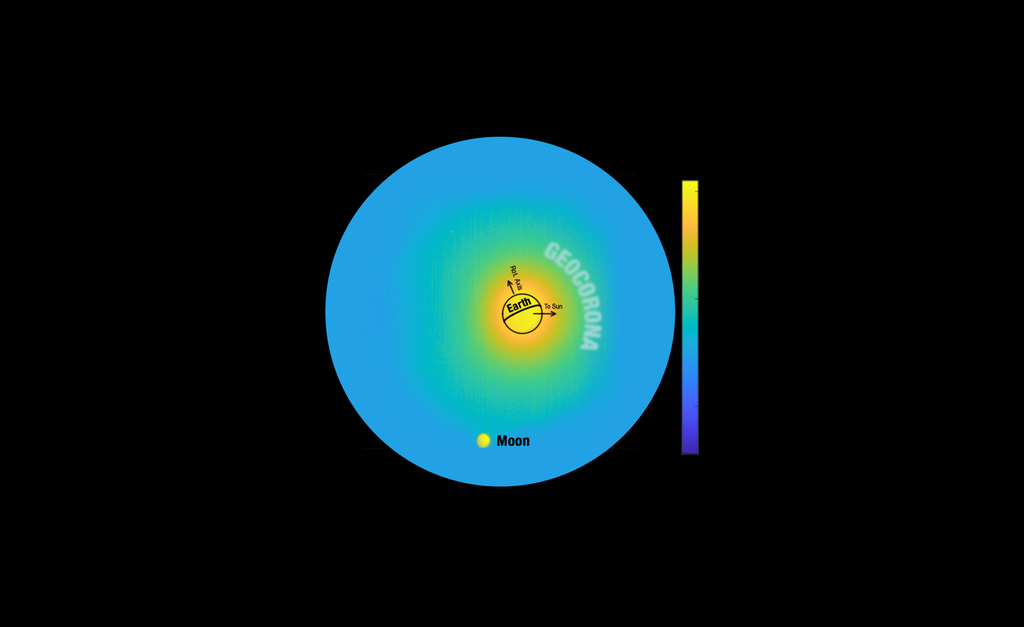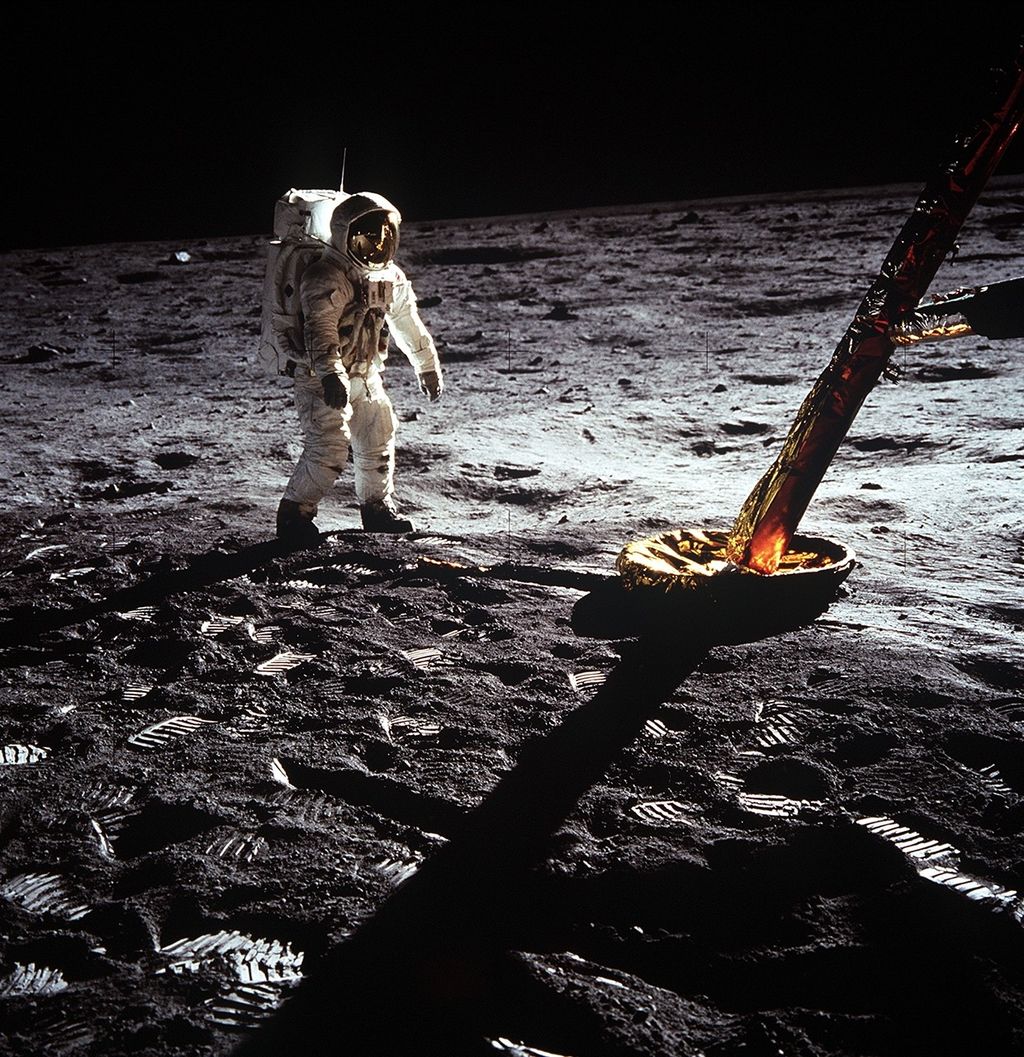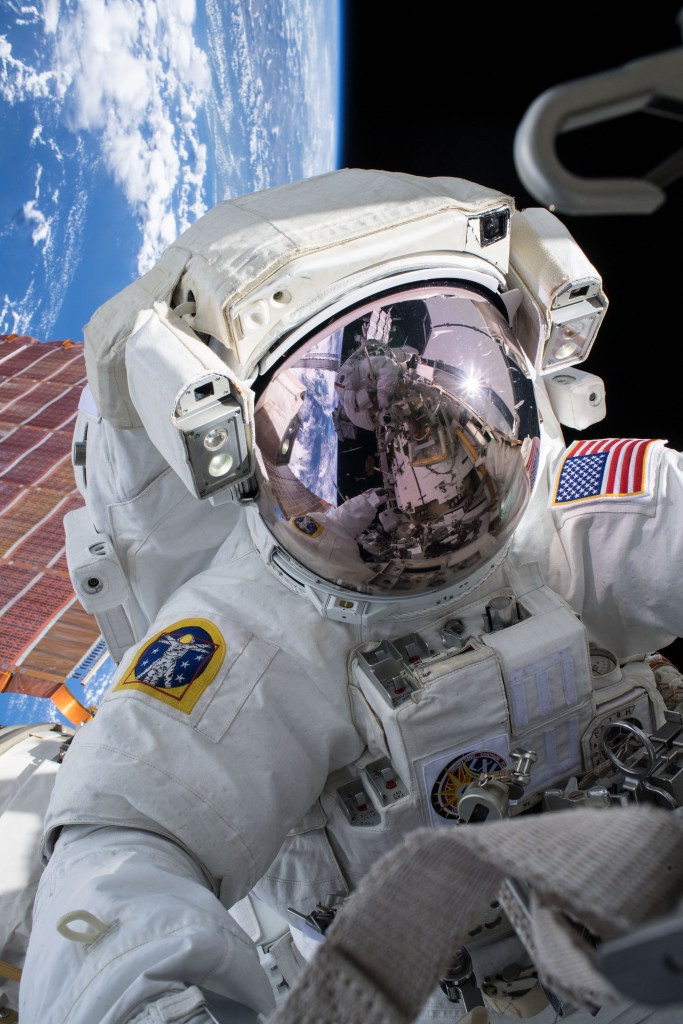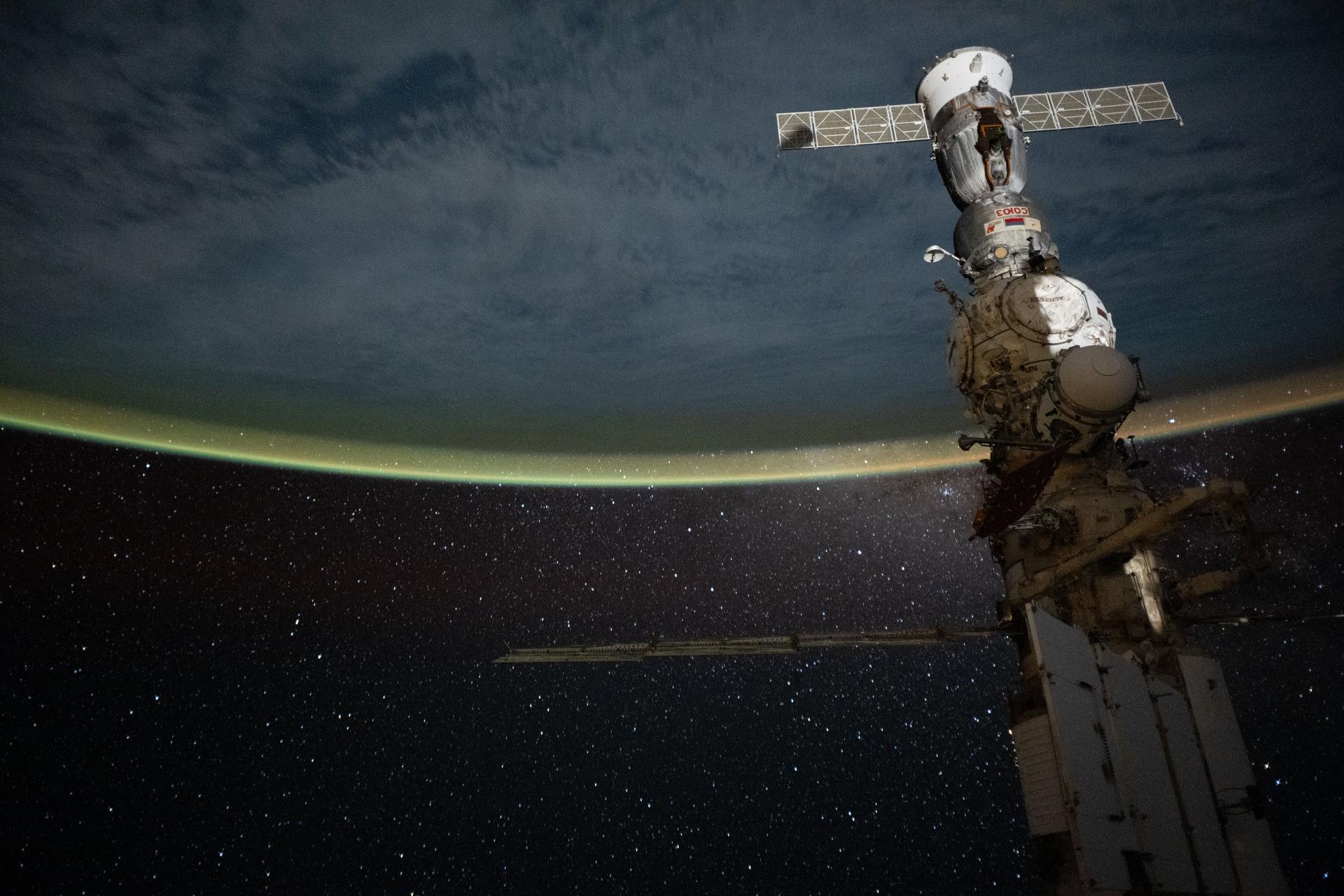Crew Works Wide Variety of Research and Awaits New Arrivals
High intensity exercising and droplets teeming with particles were the main research topics aboard the International Space Station on Tuesday. The Expedition 73 crew is also preparing to welcome three new crewmates this week while another trio gets ready to return to Earth next month.
Crew health monitoring and fitness evaluations are a crucial part of an astronaut’s stay aboard the orbital outpost. The long-duration missions in microgravity affect the crew member’s body in numerous ways and daily exercise helps keep crews fit and healthy while living in weightlessness. Doctors constantly monitor the crew with a variety of checkups, sensors, questionnaires, and more to ensure mission success off the Earth.
NASA Flight Engineers Jonny Kim and Zena Cardman took part in one portion of the CIPHER human research study looking at how the cardiovascular system adapts to space. Cardman scanned Kim’s chest with the Ultrasound 2 device while electrodes recorded his cardiac activity. Doctors on the ground monitored in real-time to understand how his heart is adapting to living in space.
Next, Kim pedaled on the Destiny laboratory module’s exercise cycle while attached to sensors and breathing gear that monitored his heart and lung activity. Doctors will use the data collected from the hardware to evaluate aerobic capacity, or the bodies’ ability to deliver and use oxygen during strenuous physical activity in space. Afterward, he rejoined Cardman and reviewed procedures, tools, and communications necessary for a medical emergency aboard the space station.
NASA Flight Engineer Mike Fincke set up a fluorescence microscope inside Destiny and installed sample hardware so scientists on the ground could view how particles behave inside fluids. The fluid physics study may inform commercial in-space manufacturing techniques and improve optical materials and pollution removal operations.
Flight Engineer Kimiya Yui from JAXA (Japan Aerospace Exploration Agency) spent the first half of his shift reorganizing cargo inside the Kibo laboratory module to make space for upcoming activities. Later, Yui measured the airflow inside of his crew quarters located inside the Harmony module. The measurements help protect health and promote comfort for the crew.
Station Commander Sergey Ryzhikov from Roscosmos worked inside the Soyuz MS-27 crew spacecraft that he, Kim, and Roscosmos Flight Engineer Alexey Zubritsky will return to Earth in next month. Ryzhikov first checked the Soyuz’ electronics and communications systems then continued loading cargo inside the spacecraft for the ride back to Earth.
Zubritsky began his shift collecting his blood, saliva, and hair samples for analysis to understand how the brain and immune system adapt to weightlessness. He then spent the rest of his day checking the Roscosmos segment’s ventilation system and collecting station water samples for analysis to protect crew health.
Roscosmos Flight Engineer Oleg Platonov photographed and treated microbe samples collected on the station. Researchers will use the observations to learn how microbes survive in space and prevent contamination on spacecraft.
Back on Earth, three new crew members are counting down to their launch aboard the Soyuz MS-28 crew spacecraft from the Baikonur Cosmodrome in Kazakhstan to the International Space Station. NASA astronaut Chris Williams and Roscosmos cosmonauts Sergey Kud-Sverchkov and Sergei Mikaev are scheduled to lift off inside the Soyuz at 4:27 a.m. EDT (2:27 p.m. Baikonur time) on Thursday, Nov. 27. They will orbit Earth twice before docking to the Rassvet module at 7:38 a.m. the same day to begin an eight-month space research mission. Live launch coverage begins 3:30 a.m. on NASA+, Amazon Prime, and YouTube.
Learn more about station activities by following the space station blog, @space_station on X, as well as the ISS Facebook and ISS Instagram accounts.
Get the latest from NASA delivered every week. Subscribe here.


